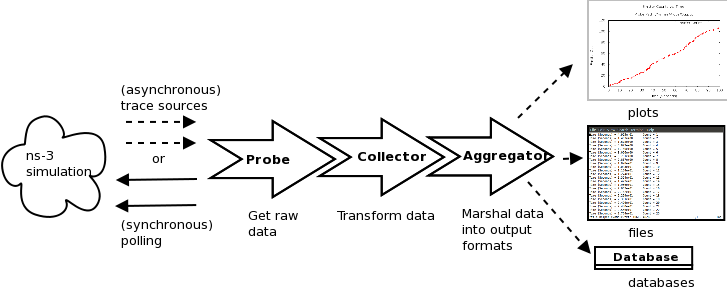
|
A Discrete-Event Network Simulator
|
Manual |
The DCF consists of three basic classes:
All three of these classes provide the capability to dynamically turn themselves on or off throughout a simulation.
Any standalone ns-3 simulation run that uses the DCF will typically create at least one instance of each of the three classes above.

Data Collection Framework overview
The overall flow of data processing is depicted in Data Collection Framework overview. On the left side, a running ns-3 simulation is depicted. In the course of running the simulation, data is made available by models through trace sources, or via other means. The diagram depicts that probes can be connected to these trace sources to receive data asynchronously, or probes can poll for data. Data is then passed to a collector object that transforms the data. Finally, an aggregator can be connected to the outputs of the collector, to generate plots, files, or databases.

Data Collection Framework aggregation
A variation on the above figure is provided in Data Collection Framework aggregation. This second figure illustrates that the DCF objects may be chained together in a manner that downstream objects take inputs from multiple upstream objects. The figure conceptually shows that multiple probes may generate output that is fed into a single collector; as an example, a collector that outputs a ratio of two counters would typically acquire each counter data from separate probes. Multiple collectors can also feed into a single aggregator, which (as its name implies) may collect a number of data streams for inclusion into a single plot, file, or database.